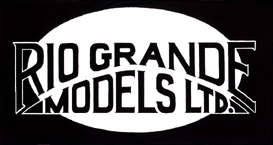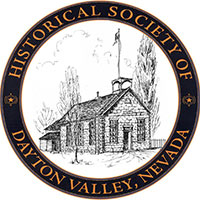

Tonopah Railroad.
By Randy Hees.The May 1900 discovery of silver and gold at Tonopah set off one of the last of the great “rushes” and lead quickly to the establishment of the towns of Tonopah and Goldfield. At one time Goldfield was the largest city in the state of Nevada. Of course, the new community of Tonopah, and its mines needed transportation, better than provided by freight wagons to Sodaville on the Carson & Colorado Railroad, so soon, the community and the mine owners started to call for a railroad. The new owners of the Carson and Colorado, Harriman and his associates considered building connecting line, nothing happened. A railroad promoter tried as well, but was unsuccessful in raising the funds to proceed.
Eventually, the Tonopah Mining Company organized, and funded the Tonopah Railroad Company, to build a 62 mile narrow gauge railroad from Tonopah Jct (Rhodes) on the C&C. Trackage rights on the C&C from Tonopah Jct. to Mina were negotiated with the Southern Pacific. Rolling stock was ordered; locomotives including three used and one new locomotive, with cars from John Hammond’s California Car works. Construction started in early 1903. The railroad reached Tonopah on July 4 formal opening (with a parade) waiting until July 25.
The line was surveyed and located by an eastern engineer, who believed the desert a dry place, and didn’t allow for sufficient culverts, and built portions of the line up (dry) stream beds. The Summer of 1904 was a wet year in Central Nevada, and the line was closed on several occasions due to washouts.Meanwhile, the Carson & Colorado railroad struggled with the traffic generated by the Tonopah boom, as well as the materials needed to build the new railroad, with embargos on inbound cargo… leading to the railroad to begin standard gauging the C&C, starting at Mound House in Oct 1904.
Apparently, prior to construction, the Tonopah Mining Company had received assurances from the Southern Pacific that the Carson & Colorado would continue to operate as a narrow gauge carrier, and as a result the line was built as a narrow gauge railroad, with 6’ ties, equipped with new cars at at least one new locomotive. Some frustration was expressed in their annual reports at the prospect of having to soon rebuild the line to standard gauge.
The new standard gauge Carson & Colorado reached Sodaville in July 1905, and the Tonopah Railroad converted to standard gauge on August 14 railroad. In those 13 months, it reportedly paid back over half of the cost of construction. With the construction of the standard gauge branch to Goldfield, the Tonopah railroad was reorganized as the Tonopah & Goldfield. The narrow gauge locomotives were sold to the Sumpter Valley Railroad, It took several years to sell off all the cars, which later found homes on the Lake Tahoe Railway & Transportation Co., Southern Pacific, Eureka and Palisade, and Sierra Nevada Wood and Lumber Co.
Hilton, George W. (1990). American Narrow Gauge Railroads. Stanford: Stanford University Press. ISBN 0-8047-2369-9.
Myrick, David F. (1962). Railroads Of Nevada and Eastern California: Volume 1. Berkeley: Howell-North Books. ISBN 978-0874171938.
Journal of the Southern Pacific Narrow Gauge Historical Society, No 66 Fall 2012, and No 67, Winter 2013
Reference Material Available Online
Photographs.
Collected Tonopah Railroad Photographs.
Images collected from private collections, libraries and historical societies.
Roster.
Equipment Roster, Compiled by Randy Hees. May 2013
Maps.
The Route of the Tonopah Railroad for Google Earth.
by Andrew Brandon
Reports.
Reports and Decisions of the Interstate Commerce Commission of the United States, Volume 34. 
Annual Report of the Tonopah & Goldfield Railroad Company for the year ending June 30, 1906. 
Collections.
Tonopah Mining Company records at Hagley Museum, Delaware.
Nevada \ Tonopah Railroad


